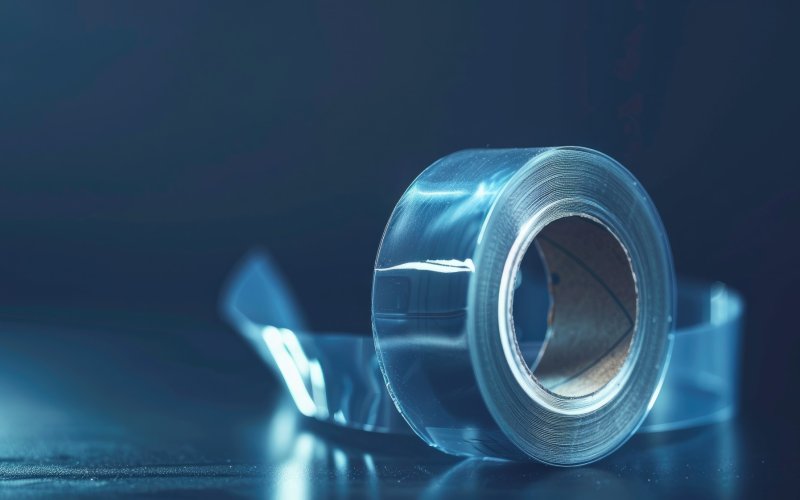By quickly peeling off the adhesive tape, you not only caused a flash of visible light, but even a brief pulse of X-rays. Don't worry, you are not in any danger and you can keep using the tape.
This phenomenon is called triboluminescence. In some substances, the mechanical energy to which they are subjected, say during crushing or scrubbing, is converted into its internal energy. This energy is then released in the form of photons, i.e. short flashes of light. Because they are weak, they are best seen in the dark.
As early as 1620, Francis Bacon noted that bluish flashes of light appeared when sugar crystals were crushed. However, triboluminescence has probably been known since prehistoric times. Shamans used leather rattles filled with quartz crystals that gave off flashes of light when shaken. Today, a number of other substances are known to induce triboluminescence under mechanical stress.
However, the phenomenon itself is not well explained. It is thought that charges are separated by the triboelectric effect when crystals are subjected to mechanical stress, e.g. crushing, rubbing or knocking against each other. An excess of positive charges is formed on one object and an excess of negative charges on the other. The subsequent recombination of these charges ionises the air and produces tiny electrical discharges, which we perceive as blue flashes.
The triboelectric effect is responsible for, among other things, the electrification of hair after combing or the formation of lightning. For reasons that are not fully understood, the triboelectric effect involves the accumulation of positive charges on one object and negative charges on another. By only a slight change in the initial conditions, it is possible to achieve that an object which is positively charged in one experiment becomes negatively charged in a second experiment.
In the case of adhesive tape, molecular bonds are temporarily formed between the tape and the substrate, which make the tape stick. When the tape is peeled off, these bonds are broken, followed by charge separation. Sometimes the tape charges positively, sometimes negatively. An electric field is created between the tape and the substrate. This ionises the surrounding air and the subsequent discharge, in a kind of miniature lightning bolt, creates a flash.
Scientists conducting experiments on peeling adhesive tape in a vacuum have found that the electric field between the tape and the substrate is strong enough to accelerate free electrons. By peeling off the tape, a miniature particle accelerator is created. The electrons then hit the peeled tape, brake rapidly, and in the process release X-rays.
A device for continuously peeling off tape in a vacuum was able to produce an X-ray flash strong enough to take a picture of the thumb of one of the experimenters. Current X-ray machines are expensive, large and complex in design. So creating an X-ray flash using only the adhesive tape you can get at any store, a small engine, and a vacuum pump sounds very interesting. It could make a small, portable and inexpensive X-ray machine.
A detailed examination of the tape peeling process has also revealed the probable cause of the characteristic peeling sound. It turns out that the peeling process is not smooth, but rather involves slip-stick events. The tape peels off for a while and then the process stalls for a while before it gets moving again. This process produces characteristic stripes on the tape, sometimes visible to the naked eye.
Slip-stick events are known from a number of other processes. For example, an earthquake is caused when sliding plates stop and then move abruptly. In the case of adhesive tape, it is thought that the moment when the tape starts moving again after stopping generates the flashes.
Simply peeling off the adhesive tape is therefore a physically extremely interesting and complicated process. You can remind yourself of it every time you tape a package or attach a child's picture to the wall.
Want to ask something?
Send us an e-mail with the subject “Physics mysteries” to the address:
We can't wait to tackle your interesting questions!





